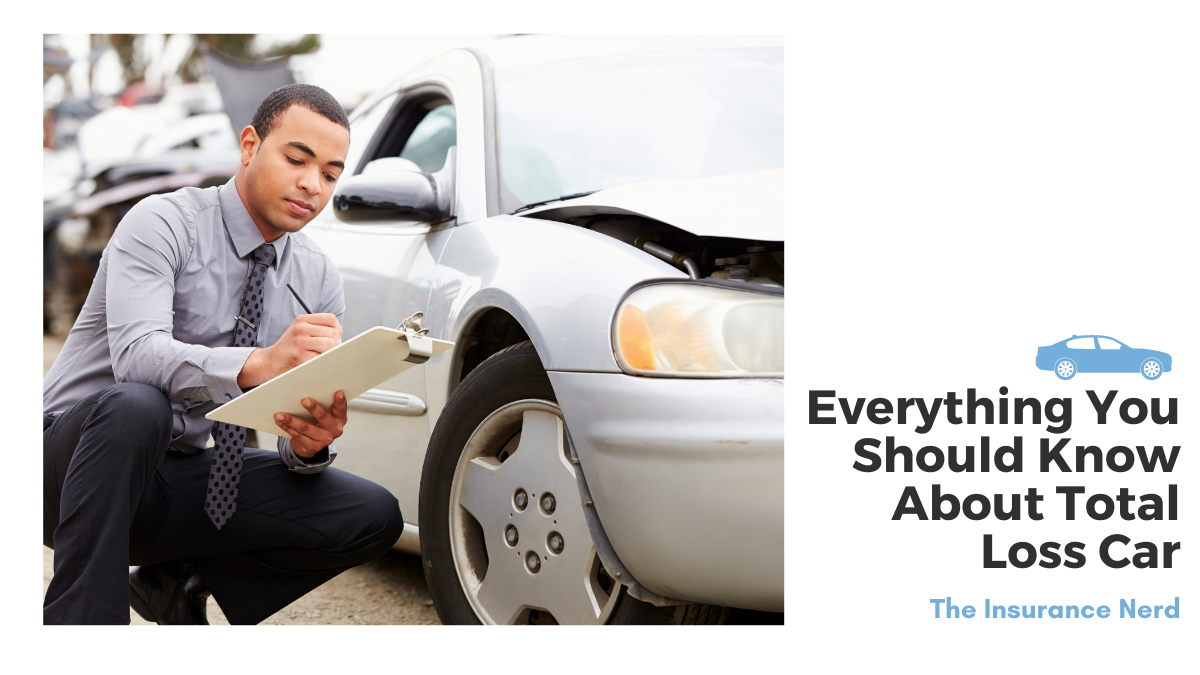When your damaged car costs more to repair than replace, insurers use the term total loss car. The total loss car claim is different from other insurance claims, and filing for one takes more effort.
Auto insurance takes different forms with a variety of add-ons to help car owners protect their property. To get a payout for a vehicle that’s declared a total loss, you must have property damage liability included.
Does your auto insurance policy have property damage liability coverage or collision insurance coverage? Do you want to find out if you can negotiate a total loss car in your auto insurance?
Read on to learn the answers to these questions and more.
What is Total Loss Car?
A property is declared as an actual total loss when the damage is so extensive that it’s impossible to recover or repair and be used further.
According to most insurance policies, a total loss car will be covered by the maximum settlement of the policy. Other terms used are “totaled” or simply “total loss.”
A total loss car claim settlement depends on the kind of coverage of the vehicle. And because insurers lose money, claims can be challenging to process. All the terms must be met before a payout is made.
Take note that your auto insurance policy should come with a property damage liability, or you should have a comprehensive policy. Property damage is required in all U.S. states.
To get a payout from an insurer, you must claim against the PD of the other driver. The latter must have been irresponsible during the time of the accident.
How Does Total Loss Car Work?
Investopedia explains that there are times when a property (such as a car) protected by insurance may be destroyed, damaged, or lost. These instances may be due to theft, an accident, or a natural disaster.
To receive coverage for a total loss car, you need to inform your auto insurance company through your collision insurance. Through a collision insurance claim, it won’t matter if you were the one at fault.
But, it would help if you settled your deductible first before your insurer covers your claim. If you have your collision and PDs ready and you’re not getting medical care, you must file a claim immediately.
An adjuster will thoroughly inspect your car and assess its damage. The claims adjuster may designate a total loss car as a result of his assessment or otherwise.
The adjuster will compute the repair cost. If that is more than the overall cash value of your vehicle, then the adjuster will designate a total loss car. The actual cash value will vary between states.
In some states, a TLT or a total loss threshold is followed. This is where damages should exceed only a percentage of the car’s cash value considered as a total loss car.
Meanwhile, most states use a total loss formula or TLF, which is the sum of the car’s overall repair cost and its salvage value. If the value is higher than the actual cash value, then the vehicle is a total loss.
What Will Happen if Your Car Is a Total Loss Car?
If you agree to the claims adjuster’s total loss car designation, you will need to accomplish a few things:
- Empty your car of all personal items
- Remove the license plates
- Hand over your car keys to the claims adjuster and all additional keys
- Complete all related forms and include other important documents
- If you’re leasing a car, you must contact the company right away
As with all types of insurance claims, you must file your claim early and make sure all the documents needed are submitted. Your car will be taken away by the insurer, and they will notify the DMV.
Your car may be declared as a salvage vehicle. In a salvaged state, any business that recovers vehicles may buy them and do whatever they want with them.
If you want to keep a total loss car, you may do so. You may have it repaired or refurbished, and your insurer will allow you to keep it. For this, you won’t receive the actual cash value of your vehicle.
The money you will get will be the actual car value minus the salvage value of the car. Even if your vehicle is totaled, it still has value from its components and parts when restored.
In some states, a totaled vehicle will be removed as they prohibit keeping total loss cars. You might be asked to get a certificate to indicate that your car is declared a total loss.
You must agree with the claims adjuster designating that your vehicle is a total loss. Otherwise, you may need to send documentation or any kind of proof that the car is worth higher than the result of the assessment.
How to Get Paid for Total Loss Car?
Total loss car laws vary from state to state. Forbes says that those that use the total loss threshold formula set the ACV from 70% to 80%. But for those that don’t, an insurer may use the total loss formula.
For example, Arizona considers a total loss formula which tells insurers if the car is totaled or not. In California, a total loss formula is used.
This determines if it is impractical or uneconomical to restore a totaled vehicle. Meanwhile, drivers get 100% of their car’s cash value in Colorado.
Colorado laws state that a vehicle is a total loss car if the price of repairs to make the car roadworthy is higher than the car’s retail market value before the damage.
In Illinois, the total loss formula for insurers to decide if a car is a total loss car is higher than 70% of the car’s fair market price.
It’s best to refer to your local DMV office or a local insurer to determine the local total loss car laws in your state.
Advantages and Disadvantages of Total Loss Car
Consider the following pros and cons of total loss car designation:
Pros
- Total loss car can help you purchase a new vehicle. It can pay for a portion of the price of a new or second-hand vehicle.
- A cost adjuster can make a thorough assessment of your vehicle and help you make appropriate claims.
- Depending on where you’re located, you can keep your totaled car and still buy a new one with the money you get from your insurer.
Cons
- You may not get the total value of your car.
- You may get a lower or diminished value for your car.
- It may take a long time to get your money from your insurer.
Some insurers offer auto insurance coverage for totaled cars. This policy can help you keep a totaled vehicle in case you want to repair or restore it.
Insurance companies may offer collision and comprehensive insurance to cover various problems that can affect your vehicle. These may include vandalism, theft, severe weather, and crashes.
Gap insurance is another policy that helps totaled car owners cover the amount more than your car loan and the amount to be settled. For this, you must have comprehension and collision insurance.
Another type of insurance for totaled cars is new car replacement insurance which will help pay for your new vehicle. The new car should be the same make and model.
This type of insurance is more efficient than money based on your car’s value when declared a total loss car. Again, you must have collision and comprehensive coverage to get this type of policy.
And if you don’t have collision insurance, you may opt to have uninsured motorist coverage. You could use this coverage if your car were totaled by an uninsured driver. However, this coverage may be insufficient.
Uninsured motorist coverage will only cover the damages up to your designated limit. This is why it’s always a good idea to have collision insurance if your vehicle’s value is higher than the limit.
Final Thoughts
Any damage to your car should be filed immediately. In case of a collision, take care of medical emergencies right away and settle insurance claims as soon as you’re able.
All auto insurance companies have processes for filing claims so contact your provider right away. In case your car is designated as a total loss car, and you don’t agree with the adjuster’s amount, you can always ask for a reassessment.
You may also hire an independent cost adjuster to help you get the correct claim amount.
If you find this article helpful, you may also want to check out the following:
- Factors That Determine The Average Cost of Motorcycle Insurance
- The 101 Of Car Leasing (Plus The Mistakes You MUST Avoid)
- Is GAP Insurance Worth It? A Look Into The Cost and Coverage
Comment below and let us know what subject would you like us to cover next.





